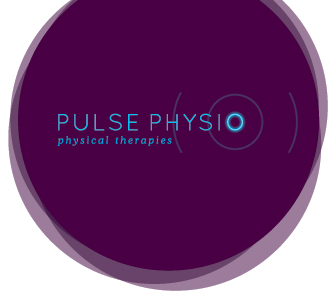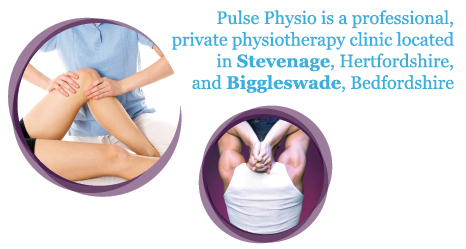Case Study Two:
'When is foot pain not really foot pain?'. |
This case study highlights just how complex and difficult it can be to diagnose and manage what looks at first like a simple problem. Musculoskeletal medicine
is rarely, if ever, simple. This should not be a surprise given the complexity of nature, but this complexity is often overlooked by health care professionals.
I have tried to discuss this case study below in a lay persons language for ease of reading. Musculoskeletal medicine is a very complex subject however. Where
technical terms are used I have clarified the meaning in brackets.
|
History of present condition:
A 37 year old lady (a homemaker), very active who enjoys horse riding and running is complaining of a 2 week history of left posterior and lateral ankle pain the back
and outside aspect of her ankle). She recalled that the problem had developed whist running and she reported that the insole in her trainers felt as though they
had 'shifted' inside. The onset was sudden and started with heel pain and later shifted into the Achilles area. She continued to run and after 6 miles her symptoms
were worsening and she had to discontinue. She had been increasing her running recently as she was training for a marathon in about 10 months time.
|
Symptoms:
Her symptoms were a constant dull ache up to 7/10 in severity. On average her symptoms were a 4-5/10 and when aggravated symptoms would settle to this level in about
30 minutes.
She reported some mild swelling about the ankle but no altered sensation i.e. pins and needles or numbness. Occasionally her symptoms would travel up her calf muscle
to just below the knee.
Aggravating factors:
Prolonged walking, running, lunges, wearing high heels.
Easing Factors:
Rest with her foot in elevation, ibuprofen gel, cold packs.
|
Impression:
This problem sounds like an ankle injury for obvious reasons. Her symptoms are about the ankle and there is some mild swelling. The fact that her symptoms initiated
in the heel before moving to the Achilles suggests an element of nerve irritation. This would be due to the local calcaneal nerves being irritated by injury nearby at
the ankle. The calcaneal nerves (lateral or medial) travel from the outside or inside of the ankle down and under the heel and into the mid-sole region. This type of
irritation can mimic plantar fascitis very well. It is also surprising common. Given this information, at this point, I expect to see some stiffness about the ankle
area, either at the ankle joint itself (most likely) or at the inferior tibio-fibular joint (less likely as it is on the wrong side of the ankle), or both. Tenderness
in the mid-sole area may indicate irritation of the calcaneal nerves.
|
Objective assessment:
Ankle movements were full but mildly uncomfortable at the end of range in the calf muscle area (that is unusual).
Resisted ankle movements including heel raises, were pain free revealing no weakness.
Her left calf muscles were tight.
Nerve mobilising assessments, i.e straight leg raise, were normal.
Joint mobilisations about the ankle revealed stiffness at the ankle joint (as expected), and mildly about the inferior tibio-fibular joint (not a surprise)
There was tenderness over what felt like a small lesion (injury) on the Achilles tendon (middle aspect), and also in the heel, between the calcaneal tubercles.
|
Diagnosis:
This appears to be what I would term a 'Talus Impingement Dysfunction' (the ankle is stiff) with ?secondary neural irritation +/- Achilles Tendinopathy +/- potential
Plantar Fascitis.
I cannot rule these problems out yet and I must consider them in my approach/management to make sure I will solve this problem. My rehab plan needs to be sensible and either
eliminate or include them in my diagnosis as I learn more about the problem.
|
Treatment One:
Mobilisation of the stiff ankle joints which lead to normal ankle joint motion but left a persistent
mild stiffness of the inferior tibio-fibular joint. Mobilising this joint also produced a mild lateral (outer) foot pain down to the fifth toe. This reinforces my
suspicion of nerve irritation but this is a different nerve, the superficial common peroneal nerve, to be precise. This does not match her initial symptoms either.
Her other symptoms remained unchanged at this point.
Her home exercise plan was to monitor her symptoms and report any changes as a result of her ankle joint mobilisation. This helps me ascertain whether or not I am on
the right track of course. I also advised her to stretch her calf muscles to relieve the pressure on the Achilles tendon and to perform simple 'intrinsic foot muscle'
exercises to act to try and reduce the load on the plantar fascia. I stressed that all exercises should be pain free, i.e stretching the calf muscles could irritate
nerves, which may worsen her problem.
|
Treatment session two:
She no longer has any Achilles or ankle pain and her problem appears to be resolved. There is still some mild stiffness at the ankle which needs to be improved upon.
The ankle is mobilised and normal function restored. It seems there is no further need for physiotherapy to the ankle area, doesn't it?
|
Treatment session three:
She reports that after the previous session she developed ankle symptoms bilaterally. She also has lower back pain now. I am slapping my forehead because I now know
she has a back problem producing foot/ankle pain, and if I assess the lower back area I will find a restriction. The reason she didn't present with lower back pain
initially is because she has a minor issue at the ankle and her somatosensory cortex wants to tell her that is where her problem is. She probably had a 'double crush'
effect where nerves irritated at 2 points produce a bigger, more complex pain sensation. Or, to put it another way, two 'neural interface dysfunctions' interacting.
Nobody ever said physiotherapy was easy did they!
Assessment of the Ankle demonstrated no abnormalities this time. Assessment of the lower back area revealed bilateral restrictions (stiffness) so I have a 'neural
Interface' point consistent with nerves which will lead to the ankle, where there used to be a 'neural Interface' dysfunction.
Treatment was mobilisation of the lower back region which was able to restore normal movement to the area, relieving the pressure on the nerves. I did not touch the
ankle areas.
|
Treatment session four:
She reports that her ankle pains settled completely whilst she was driving home. She had no further ankle/Achilles or lower back pain. There was some mild residual
stiffness of the lower back area and I mobilised again to improve flexibility to specific lumbar structures. No further management of this
problem was necessary. |
Conclusion:
This case study shows how a simple problem can later manifest itself into a bigger problem. In this case it was easily identified (if you know where to look and if
you appreciate what the central nervous system is capable of) and managed quickly. My initial diagnosis was not wrong, but it was incomplete. There was no Achilles
tendinopathy and no plantar fascitis, as we were able to discount these when we learnt more about the problem. Ongoing management was some postural and running
advice. |
Pulse Physio Home |
|
| |

